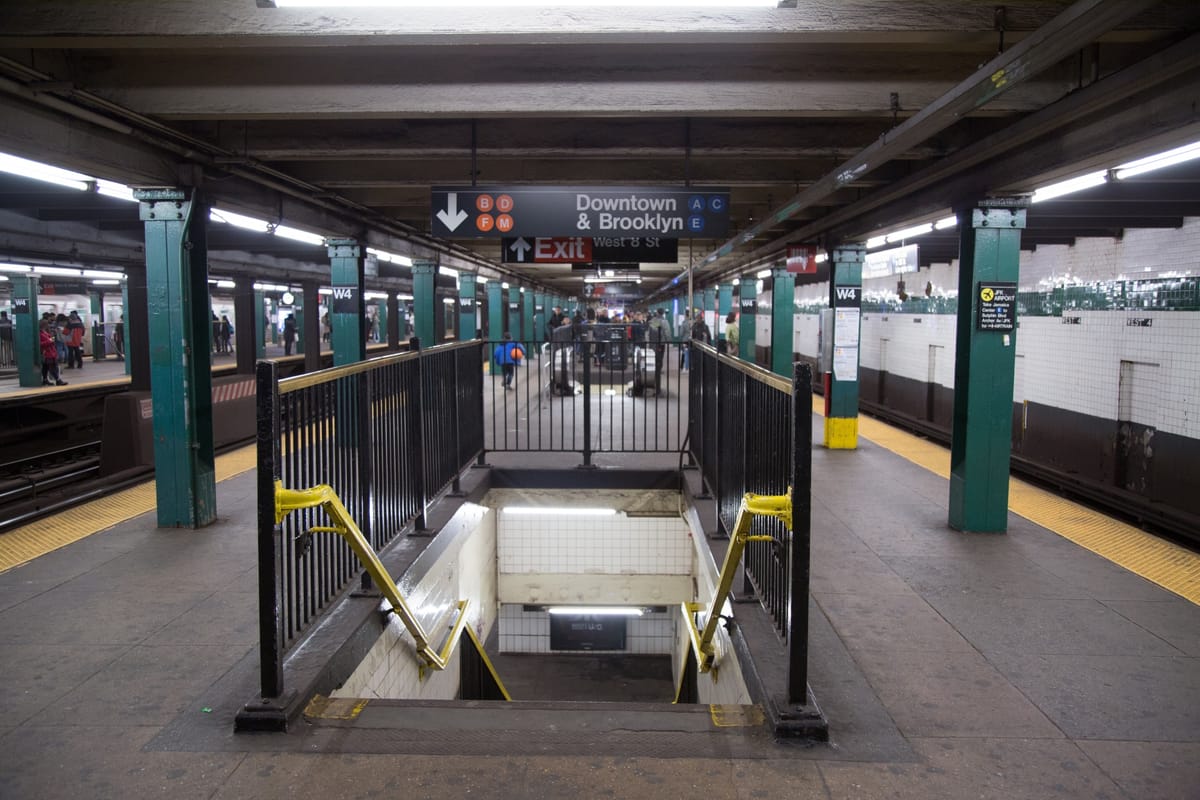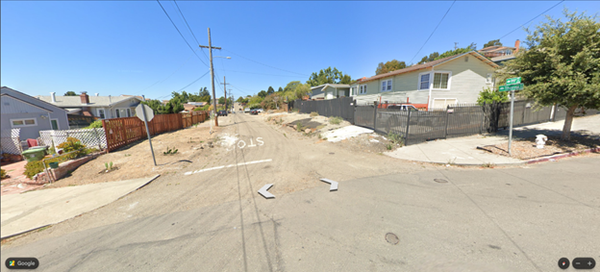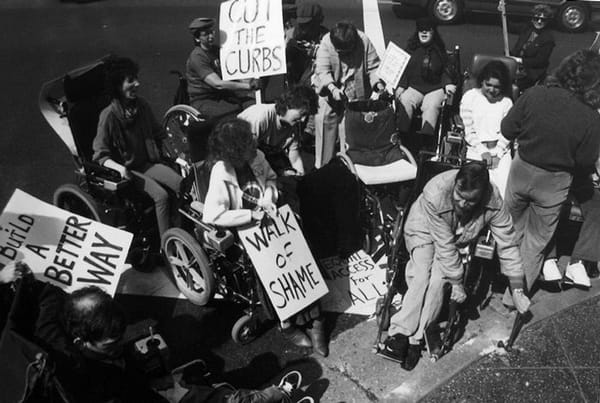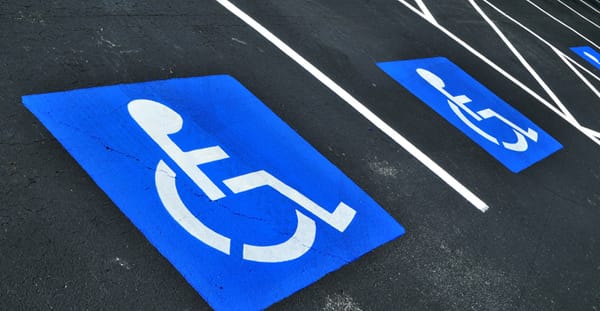7/14/25: Congestion Pricing is a Huge Disability Win
NYC's congestion pricing is a huge boon to disability independence; the Texas flood response shows the importance of government competence; and a few disability wins of the week.

Note: this is a longer newsletter, as the NYC congestion pricing article came my way after I’d written everything else, and was too good to not have a few paragraphs of its own…
Also, please consider a paid subscription! This newsletter is reader-supported and I'm reducing the price by 20% through August 15 – so less than one dollar per newsletter!
Congestion Pricing for the Win
I’ll get to the Texas floods, but first I want to start with a great urbanism and disability story coming out of New York City. Six months in, data shows that the Downtown Manhattan congestion pricing program has been an unmitigated success, especially for PWDs. According to a press release by the office of Gov. Kathy Hochul, traffic delays are down 25% in the Congestion Relief Zone and 9% across the New York City metropolitan region. The $500 million in revenue so far has enabled the MTA “to issue $15 billion in bonds to fund projects in its 2020-2024 Capital Plan,” including purchasing 435 modern R211 subway cars, which feature designated accessible seating, and “Americans with Disabilities Act (ADA) upgrades at 23 subway stations, including new elevators, reconstructed platforms, and other improvements.”
Every mode of Metropolitan Transportation Authority (MTA) transportation – subway, bus, Long Island Rail Road (LIRR), Metro-North and Access-A Ride – saw increases from January-May 2025 and each one “had post pandemic record high ridership in the first half of 2025.” Access-A Ride led the pack in ridership increases at 21%, followed by the bus at 12%; the others were single digits. I do wonder exactly why NYC’s paratransit was such a clear leader. I’m guessing that some is just disabled drivers who are disproportionally priced out of entering Manhattan using paratransit instead – especially if they don’t live near fixed route transit – while some of the change folks finding that paratransit is nicer when traffic delays are down 9% citywide. The bus is more accessible than the subway, so maybe there’s a disability nugget in the fact that it leads their 6-month gains 12% to 7%. And the fact that transit is faster and more reliable benefits everyone, but especially populations like PWDs that are less likely to own cars and more likely to ride transit.
Other impacts disproportionately benefit NYC’s disabled residents and visitors. Traffic injuries – which disproportionately affect PWDs and directly cause disability, though it’s hard to pin down the data – are down 15% in the Congestion Relief Zone. Air pollution – which also disproportionally affects PWDs and both generates and exacerbates disability – is decreasing at most sites inside and outside the zone. Finally, “[h]onking and vehicle noise complaints to 311 are down by 45% in 2025,” which is great news for both physical and mental health, ranging from hearing to heart health to anxiety disorders and dementia.
So, great news out of New York. Kudos to the voters and advocates who made congestion pricing happen.
Texas Floods, Land Use, and Disproportionate Disability Impacts
Over in Texas, July 4 floods were yet another sign of global warming amplifying extreme precipitation. But this natural disaster was made worse by human actions. Everything from an understaffed National Weather Service to failed local flood warnings to a diminished federal response have exacerbated the unfolding Hill Country disaster. Among other decisions, DHS Sec. Kristi Noem’s demand that she personally approve all Federal Emergency Management Agency (FEMA) expenditures over $100,000 is an unheard-of bureaucratic hurdle that hampered the immediate response. For example, Urban Search and Rescue Teams that would normally be pre-positioned were instead delayed by 72 hours, quite possibly contributing to excess loss of life. The $100,000 limit was also the cause of FEMA call center contracts not being renewed by their July 5 deadline, leading to a massive drop off in the percentage of answered calls for Texans seeking federal support (from 99.7% on July 5 to 35.8% on July 6 to just 15.9% on July 7). This disaster is viewed as a massive scandal for a reason. Above all, it highlights the importance of a well-funded, well-functioning government with competent leadership at local, state, and national levels – and how much things can go south without it.
On the land-use front, the disaster highlighted the FEMA’s practice of granting property owners’ requests to modify flood maps – something those property owners request so they can get cheaper flood insurance and easier approvals for new construction, among other things. FEMA had modified its 100-year flood maps to exclude 15 buildings from Camp Mystic, the all-girls’ summer camp where at least 27 campers died, at the request of Camp owners in 2013.
There are also clear equity implications to FEMA’s flood map modifications. From the article above:
Syracuse University associate professor Sarah Pralle, who has extensively studied FEMA’s flood map determinations… said her research shows that FEMA approves about 90% of map amendment requests, and the process may favor the wealthy and well-connected.
A study she published in 2021 with researcher Devin Lea analyzed more than 20,000 buildings that had been removed from FEMA flood maps. It found that the amendments occurred more often in places where property values were higher, more white people lived and buildings were newer.
All things being equal, property owners who receive approvals get to save money and pursue revenue-generating development compared to neighbors who don’t request or receive flood map changes. Any visitor or future resident who bothers to check the flood maps – including campers, travelers, renters, or subsequent purchasers of property – may assume they are safer than they are, or that the property they just purchased is safer than it is. And that would hit PWDs hardest.
On the disability front, there’s not much specific to this disaster that I’ve found so far, aside from the usual notes that PWDs are uniquely impacted by natural disasters and will almost always be an outsized share of deaths; we’re also an outsized share of unnecessary deaths due to misguided planning, government incompetence, government neglect, or global warming. (An AARP article about seniors killed in the Texas floods also shares how disability impacts survival). So, if 16.9% of Kerr County’s population has a disability (American Communities Survey 2019-2023 5-year data), it’s likely that more than 16.9% of deaths will be PWDs. It’s also likely that PWDs will account for more than 16.9% of unnecessary deaths caused by NOAA cuts, changed flood maps, unsent disaster warnings, and Kristi Noem’s absurd demand about payment approvals.
In other good news (beyond NYC)
There were 3 other bits of good news this week. After significant and well-coordinated uproar, the Department of Energy (DOE) has delayed its implementation of a final rule that would remove significant accessibility requirements for new buildings that receive federal funding. Equal access in federally-funded programs and investments is the central promise of Section 504 of the Rehabilitation Act – which was only implemented after a weeks-long sit-in by people with disabilities (PWDs) in San Francisco – and rolling back DOE building requirements would rollback many of Section 504’s housing promises. It would especially jeopardize the accessibility of affordable housing that receives federal grants and other financing. The delay is at least a temporary win, and given DOE is taking 60 days to review 20,000 overwhelmingly negative comments about rescinding the rule, advocates have hope they’ll keep the rule entirely.
A couple state-level policies are also improving disaster readiness and response for people with disabilities (PWDs). In Ohio, the state’s Department of Developmental Disabilities has produced more than 20 communications boards focused on a range of disabilities and situations – and just added one designed to help folks with communication disabilities interact with first responders. Effective communication is vital to inclusive emergency response, whether that’s for someone calling 911 for a personal emergency or someone just rescued from climate-fueled floodwaters. Communication boards, which include symbols, drawings, and photos, help bridge communication gaps. They are helpful for many people with intellectual and developmental disabilities (IDD) as well as Deaf/hard-of-hearing folks and people with little or no English proficiency. Ohio’s move may well save lives and will definitely make emergency experiences more tolerable for people with communication disabilities.
In Oregon, some good news from mid-June – a program to provide emergency kits and batteries to older adults and PWDs – is finally getting some traction in the news. The Oregon Department of Human Services announced on June 18 that the Office of Aging and People with Disabilities (APD) will be distributing an additional “18,000 emergency kits and 1200 power stations for older adults and people with physical disabilities who get Medicaid in-home supports.” This comes in addition to 2000 emergency kits and 500 power stations given out by APD and a whopping 20,137 emergency kits, 7047 power stations, and 1276 generators distributed by the Office of Developmental Disabilities Services (ODDS) in partnership with community organizations. Government distributing emergency kits to folks who a) disproportionately benefit from having them and b) are disproportionately under-resourced to afford them is smart emergency policy.
There are couple key differences between Oregon's battery distribution program and emergency backup programs in California like Disability Disaster Access & Resources (DDAR). First, Oregon’s program is funded in large part by grants from the American Rescue Plan Act (ARPA) while California’s program is funded by settlements with investor-owned utilities like Pacific Gas & Electric (PG&E). And second, Oregon’s program gives batteries to seniors and PWDs while California’s distribute batteries around time-limited Public Safety Power Shutoff (PSPS) events and then ask for them back to be re-distributed in the next PSPS. Each model has its advantages in terms of personal preparedness and effective use of limited resources – but while California will have ongoing payments from utilities for its battery programs, Oregon may be unlikely to see another ARPA anytime soon and will need to look elsewhere for future battery funding.
In other news:
Deaf immigrant detained by ICE for 4 months without interpreter - CalMatters
California is finally getting a housing agency. What took so long? - CalMatters
New York congestion pricing at 6 months: the results | Smart Cities Dive
It Just Got Easier to Build Nuclear Power Plants in Wisconsin - Inside Climate News
Disaster 101: Your guide to extreme weather preparation, relief, and recovery | Grist
Far-right lawmakers to lead EU negotiations on new climate target | Reuters
Anxiety grips feds as Supreme Court clears path for layoffs - E&E News by POLITICO
FEMA leader is a no-show after deadly Texas flooding - E&E News by POLITICO
As flooding rocks Texas, Americans fear rise of extreme weather
Legislators Push Back Against ‘Rent-Setting’ Software — Shelterforce
PVA CEO: 35 years after ADA, accessibility barriers still remain | 13newsnow.com
People with disabilities set to receive new $200 monthly benefit | CBC News
Michigan district agrees to reform seclusion and restraint policies
How the Americans with Disability Act Transformed Corporate Culture
NJ disability watchdog says group homes still rife with neglect, abuse
NJ group home crisis demands leadership | Editorial
Five of the Ugliest Transportation Policies In the 'Big, Beautiful' Bill — Streetsblog USA




